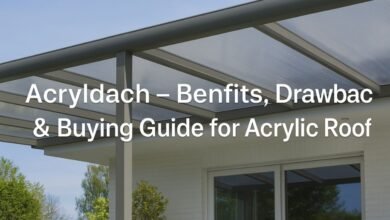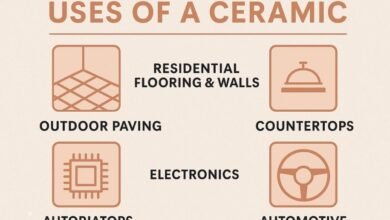Decor Stone Melbourne: A Complete Guide to Luxury, Care, and Design

In the heart of modern architecture and design, Melbourne has become one of Australia’s hubs for creative and stylish living spaces. Among the most striking design trends in the city is the growing use of decor stone. Whether used in luxury homes, commercial buildings, gardens, or urban landscaping, decorative stone adds both function and beauty. Known for its natural elegance, durability, and versatility, decor stone Melbourne has carved out a prominent space in both interior and exterior design.
This comprehensive guide will explore the different types of decorative stone, answer common questions such as “Which stone is used for decoration?”, “How to clean stone decor?”, and “Which stone is for luxury?”, and provide practical tips on “How to keep decorative stones white?”. We’ll also examine what exactly qualifies as a decorative stone and why Melbourne is embracing it in both classic and contemporary designs.
What Is Decorative Stone?
Before diving into Melbourne-specific trends, it’s important to define decorative stone. A decorative stone is a naturally occurring or manufactured stone used primarily for aesthetic appeal. Unlike structural stone, which focuses on load-bearing purposes, decorative stones are valued for their beauty, colors, patterns, and textures.
Other terms often used to describe decorative stones include:
-
Landscaping stone
-
Garden stone
-
Ornamental stone
-
Veneer stone
From small white pebbles that brighten garden pathways to luxurious marble slabs that adorn kitchens, decorative stone is a flexible design element that brings timeless appeal.
Which Stone Is Used for Decoration?
One of the most common questions is: Which stone is used for decoration? The answer is that many different types of stone are used, each chosen depending on the setting, style, and budget.
1. Marble
-
Famous for its veined patterns and smooth finish.
-
Commonly used in bathrooms, kitchens, and feature walls.
-
Symbol of sophistication and timeless beauty.
2. Granite
-
Known for strength and durability.
-
Excellent for benchtops, flooring, and high-traffic areas.
-
Adds both natural beauty and resilience.
3. Limestone
-
Softer than granite or marble, but prized for its natural texture.
-
Great for exterior facades, flooring, and landscaping.
4. Travertine
-
Popular for outdoor patios and pool surroundings.
-
Its earthy tones make it a favorite for Mediterranean-style homes.
5. Bluestone (especially popular in Melbourne)
-
A local classic, often used in Melbourne’s heritage and modern architecture.
-
Durable, slip-resistant, and elegant in outdoor spaces.
6. Onyx & Quartzite
-
Vibrant and translucent, often used as statement pieces in luxury designs.
These stones provide Melbourne homeowners and designers with a wide array of choices depending on the desired balance between durability and aesthetics.
Which Stone Is for Luxury?
When people ask, “Which stone is for luxury?”, the answer often points toward marble, onyx, and quartzite.
-
Marble is historically associated with palaces, sculptures, and elite architecture. Its veining patterns vary from subtle to dramatic, making it a hallmark of luxury living.
-
Onyx, with its unique translucency, allows backlighting to create breathtaking decorative features. It is rare, expensive, and considered one of the most luxurious stones available.
-
Quartzite, harder than granite, combines durability with unique exotic patterns, offering both functionality and high-end aesthetics.
In Melbourne, luxury homes often feature these stones in kitchens, bathrooms, and statement wall panels, reflecting a preference for elegance that stands the test of time.
How to Clean Stone Decor?
Maintaining the beauty of decorative stone is crucial. Improper cleaning can lead to dullness, staining, or surface damage. Here are practical steps:
General Cleaning
-
Use pH-neutral soap or a mild stone cleaner.
-
Avoid acidic or harsh cleaners, as they can erode stone surfaces.
-
Wipe with a soft cloth or sponge and rinse with clean water.
Outdoor Stone Decor
-
For landscaping stones, use a low-pressure washer or a garden hose.
-
Remove moss, dirt, and debris with a stiff brush, but avoid wire brushes on soft stones like limestone.
For Stubborn Stains
-
Apply a paste poultice made of baking soda and water, cover with plastic, and leave overnight.
-
Rinse thoroughly to restore the stone’s appearance.
Regular cleaning keeps decorative stones vibrant and ensures they maintain their intended aesthetic.
How to Keep Decorative Stones White?
White decorative stones, such as marble chips or quartz pebbles, add a clean and elegant touch to pathways, gardens, and interior designs. However, their brightness can fade over time due to dirt, mold, or exposure. Here are maintenance tips:
-
Frequent Washing
-
Rinse with water regularly to prevent buildup of dirt and grime.
-
-
Preventing Soil Stains
-
Use landscape fabric beneath white stones to stop soil from seeping through.
-
-
Gentle Scrubbing
-
For garden stones, scrub lightly with a brush dipped in mild soapy water.
-
-
Vinegar Solution (for outdoor stones)
-
Mix vinegar with water (50:50) for algae or mold growth. Rinse immediately afterward to avoid damage.
-
By combining prevention and consistent cleaning, decorative stones in Melbourne’s homes and landscapes can retain their crisp white appearance.
The Role of Decorative Stone in Melbourne
Melbourne’s love for natural stone is deeply rooted in its architectural heritage. Bluestone laneways, iconic across the city, demonstrate how natural stone becomes part of cultural identity. Today, decorative stone in Melbourne serves not just as tradition but also as modern sophistication.
Applications in Melbourne:
-
Residential Projects: Feature walls, kitchen benchtops, bathroom finishes, and garden landscaping.
-
Commercial Spaces: Office lobbies, hotel reception areas, and luxury retail stores.
-
Outdoor Living: Pool surrounds, patios, and barbecue areas where bluestone, travertine, and granite are common choices.
Stone suppliers and fabricators in Melbourne provide a wide range of decorative stones, making it easy for designers and homeowners to match stone with their vision.
Sustainability and Longevity of Stone Decor
Another reason decorative stone is favored in Melbourne is sustainability. Natural stones are eco-friendly, long-lasting, and recyclable. Unlike synthetic materials, they require minimal processing and offer a lifecycle that spans decades.
Properly maintained, a stone feature wall or garden pathway in Melbourne not only elevates property value but also withstands the test of time.
Conclusion
Decorative stone has become a signature of Melbourne’s design culture, blending natural beauty with practical durability. From marble and granite for interiors to bluestone and limestone for outdoor settings, these stones answer the common question, “Which stone is used for decoration?”. Luxury projects favor onyx, quartzite, and marble, while cleaning and maintenance ensure their long-lasting beauty. For those wondering “How to keep decorative stones white?”, regular care and thoughtful installation are key.
As Melbourne continues to balance tradition with modern elegance, decor stone remains a cornerstone of stylish living. Its timeless appeal ensures it will remain a part of Melbourne’s architecture and design landscape for generations to come.
Written by News Zio


